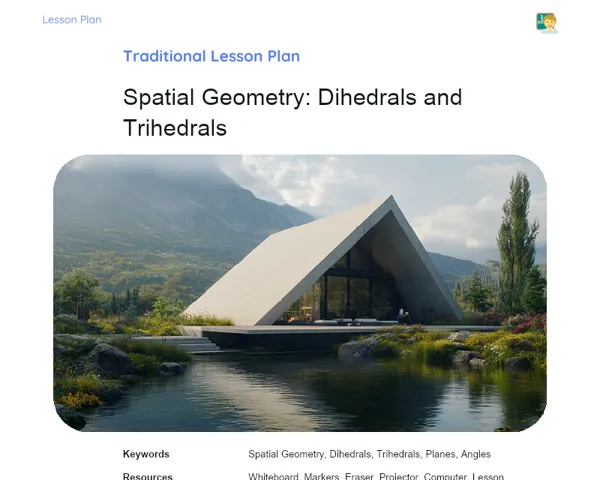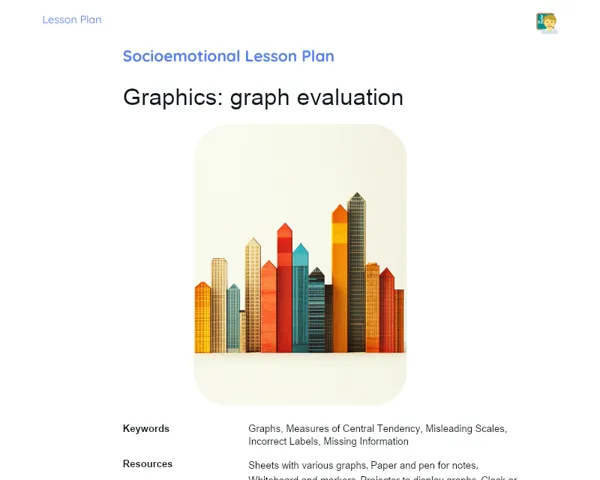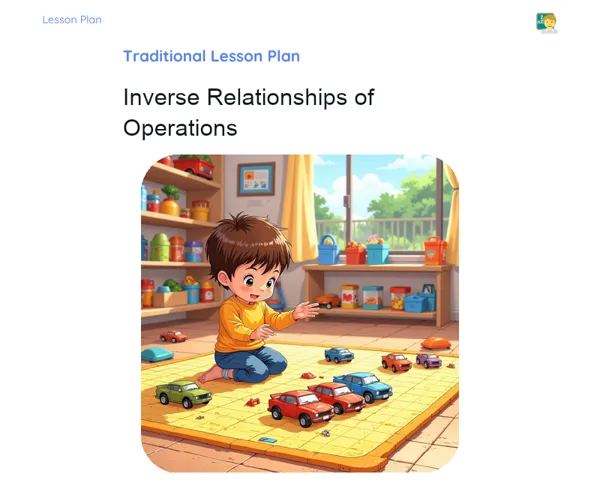Lesson Plan Teknis | Problems with Scientific Notation
| Palavras Chave | Scientific Notation, Mathematics, 9th Grade, Basic Operations, Number Conversion, Scientific Context, Technology, Engineering, Job Market, Practical Skills, Maker Activity, Reflection, Challenges, Collaboration, Data Interpretation |
| Materiais Necessários | Video 'What is Scientific Notation?' from the 'Numberphile' channel on YouTube, Cardboard, Paper, Markers, Ruler, Scissors |
Objective
Duration: 10 - 15 minutes
This phase aims to ensure that learners appreciate the relevance of scientific notation in both academic settings and the job market. By equipping them with practical skills for converting and managing numbers in scientific notation, they will be better prepared to tackle real-world challenges and interpret data across scientific and technological subjects, making them more competitive in the job market where these skills are crucial.
Objective Utama:
1. Comprehend scientific notation and its significance in scientific and technological fields.
2. Master the conversion of numbers to and from scientific notation.
3. Carry out basic arithmetic operations (addition, subtraction, multiplication, and division) using numbers expressed in scientific notation.
Objective Sampingan:
- Enhance the ability to solve practical problems that involve scientific notation.
- Utilise scientific notation in interpreting data within scientific and technological disciplines.
Introduction
Duration: (10 - 15 minutes)
This phase’s goal is to ensure that learners understand the vital role of scientific notation in academic and occupational realms. By developing hands-on skills in number conversion and manipulation, learners will be equipped to solve practical problems and analyse data in scientific and technological fields, positioning them favourably for the job market where such abilities are often in demand.
Curiosities and Market Connection
Scientific notation is extensively used in industries such as engineering, IT, and finance. For instance, engineers rely on it to calculate forces and pressures in their designs, while data analysts use it to sift through massive datasets. Here’s a fun nugget: the human body comprises around 37 trillion cells, which in scientific notation is written as 3.7 x 10^13. Without scientific notation, handling such large figures would be quite the hassle!
Contextualization
Scientific notation is a vital resource in several areas of study, including physics, chemistry, and astronomy. It provides a more manageable way to express extremely large or small numbers. Just think about how challenging it would be to measure distances between stars or the weights of subatomic particles without it - almost impossible! This lesson will cover how to leverage this essential tool to ease calculations and address complex issues.
Initial Activity
Kick off the lesson with a thought-provoking question: How would you express the distance from Earth to the Sun, which is about 150 million kilometres, in a way that makes calculations easier? Next, play a short video (3-5 minutes) that vividly explains the significance of scientific notation in both everyday life and scientific contexts. A recommended video is 'What is Scientific Notation?' from the 'Numberphile' channel on YouTube.
Development
Duration: 40 - 45 minutes
This phase's objective is to ensure learners grasp and can effectively apply scientific notation. By engaging in collaborative and challenging activities, they reinforce their learning and develop essential skills for solving real challenges. Building and using a manual scientific notation calculator deepens understanding and promotes both creativity and cooperation.
Topics
1. An introduction to scientific notation
2. How to convert numbers to and from scientific notation
3. Basic arithmetic operations (addition, subtraction, multiplication, and division) with scientific notation
4. Real-world applications of scientific notation within the job market
Thoughts on the Subject
Encourage students to think about how scientific notation simplifies the representation and manipulation of extremely large or small numbers, and how crucial this is across varied fields and job sectors like physics, engineering, and IT.
Mini Challenge
Maker Challenge: Create a Scientific Notation Calculator
In this activity, learners will design and construct a basic calculator that performs operations on numbers in scientific notation using simple materials such as cardboard, paper, markers, and a ruler. This hands-on tool will help them grasp and apply the concepts of scientific notation.
1. Split the class into groups of 4 to 5 learners.
2. Hand out the necessary materials to each group: cardboard, paper, markers, ruler, and scissors.
3. Instruct each group to create a manual calculator with the following features:
4. A space for entering the base number (from 1 to 10).
5. A space for entering the exponent (power of 10).
6. A mechanism to perform basic operations (addition, subtraction, multiplication, and division) involving two numbers in scientific notation.
7. A display area for showing the final result in scientific notation.
8. Encourage discussions within groups about their design and construction ideas, fostering creativity and teamwork.
9. Once built, each group should present their calculator to the class, explaining its functionality and demonstrating an example calculation.
10. Promote sharing of ideas between groups, highlighting various approaches and solutions found.
Foster practical and collaborative skills by applying the concepts of scientific notation in the creation of a manual tool that aids in mathematical calculations.
**Duration: 30 - 35 minutes
Evaluation Exercises
1. Convert the following numbers into scientific notation: 4500, 0.0078, 1230000.
2. Convert these scientific notation numbers into decimal form: 3.4 x 10^5, 2.1 x 10^-3, 6.02 x 10^23.
3. Carry out the following operations using scientific notation: (2 x 10^3) + (3 x 10^2), (4 x 10^-4) - (1 x 10^-5), (5 x 10^6) * (2 x 10^2), (9 x 10^8) / (3 x 10^4).
4. Describe a real-life scenario where scientific notation would be useful and explain how you would employ this notation to solve a problem.
Conclusion
Duration: 10 - 15 minutes
This phase aims to reinforce learning by promoting reflection and conversation about the material covered. By summarising the key points of the lesson and connecting theory to real-world practice, learners solidify their understanding and recognise the importance of the subject in real contexts. Facilitating discussion allows students to share their experiences and questions, enhancing the learning process.
Discussion
Lead an open discussion with learners about what they covered in the lesson. Inquire how scientific notation can be applied across various subjects and in the workplace. Encourage reflection on the activities conducted, particularly the creation of the manual calculator. Ask what aspects they found most challenging and how they tackled these hurdles. Discuss how the exercises reinforced their knowledge and invite them to share examples of everyday situations where scientific notation might come in handy.
Summary
Recap the main points discussed during the lesson. Emphasize the importance of scientific notation in simplifying the manipulation of extremely large or small figures. Remind learners of the conversion processes for turning numbers into scientific notation and vice versa, as well as performing basic mathematical operations with these numbers. Highlight the connection between theory, practice, and real-life applications illustrated in the activities performed.
Closing
Conclude by stressing the significance of scientific notation in everyday life and various professions, underscoring how mastery of this skill can set learners apart in the job market. Thank the students for their contributions and inspire them to keep practicing and applying what they’ve learnt in real situations and in other subjects. Make it clear that the ability to leverage scientific notation is not only valuable but also widely relevant across diverse fields of knowledge.



